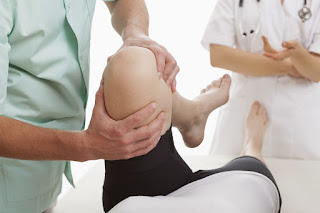Most people think of physical therapy for its benefits for patients recovering from specific injuries or procedures. While it is certainly critical in those circumstances, it is also encouraged as a preventative measure. In fact, when seniors choose to participate in preventive therapy, the very falls that cause injuries and necessitate operations for full recovery may be avoided. Here are some other potential negative outcomes that may be prevented with the help of therapy.
Loss of Independence
Due to the lack of mobility and agility caused by injuries, falls are the leading cause of relocation to skilled care facilities. In fact, the Center for Disease Control (CDC) estimates that one out of five falls leads to a serious injury, including broken bones or traumatic head injuries. Most require long-term care, including possible operations. As a result, seniors who experience falls may lose their ability to live independently.
Chronic Pain
As a result of injuries that remain long-term problems, chronic pain often becomes an issue. This may lead to long-term stays in recovery centers. In addition, even those who return home after receiving care often suffer from uncontrollable or frequent pain that can be managed, but not entirely resolved.
Embarrassment
For some people, embarrassment at the possibility of having another fall is an impediment. Those who enjoyed social activities before a fall may be reluctant to take part in such activities out of fear of a fall happening again.
Repeated Falls
Even those who aren't afraid of the social impact of falling again are prone to repeated falls. Additional research from the CDC found that falling once will double the chance of another fall instance. While
rehabilitation services after an injury aid tremendously in recovery, continuing weakness and limited range of motion can contribute to repeated incidences.
Lower Self-Esteem
Loss of independence combined with these other factors can lead, sadly, to a feeling of shame and a poor sense of self. Some people feel that they are a burden to others as they age, especially when they are no longer able to care for themselves as they once did.
Thankfully, there is a positive way to prevent falls from occurring.
Physical therapy helps seniors improve muscle control and coordination through a combination of strength and balance training. Avoiding falls becomes more difficult with age, but when the proper steps are taken, all individuals have the opportunity to experience less pain and more joy. Our caring team at Midlothian HealthCare Center can help you or a loved one with preventive therapy services.
Contact us today to get started.

